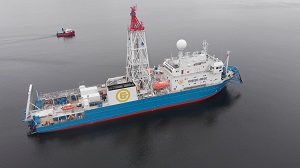Two Comprehensive Scientific Expeditions of Rosneft Depart to Arctic

 |
Two large-scale research expeditions of Rosneft Oil Company have departed from the port of Murmansk.
Rosneft Oil Company has been implementing its comprehensive long-term research programme in Arctic that includes geological, weather and environmental surveys. These efforts are undertaken jointly with the nation’s leading research and development organisations.
The first expedition sees the Bowenite engineering drilling vessel heading to the waters of Kara Sea near the Severnaya Zemlya archipelago in order to drill shallow (less than 120 metres deep) stratigraphic wells. The project’s main task is to collect core samples. The core is a valuable rock material, a direct source of geological data required to determine the age (stratification), composition and conditions of formation for sedimentary mantle rocks on the shelf area under research.
The core samples taken will be lab-tested by means of Innopraktika and the Lomonosov Moscow State University Faculty of Geology. Following that, a set of analytical studies and laboratory tests will be created to improve the reliability of forecasts of the oil and gas potential of the Arctic’s multi-aged sedimentary basins.
 |
This is the first time that stratigraphic drilling is being conducted in the northern Kara region and in the entire Eastern Arctic. Rosneft’s studies hold great significance for science and for recognising the geological composition of the Russia Arctic, as well as for assessing the oil and gas potential of the Northern Kara basin. The fieldwork is carried out in compliance with the highest standards of environmental safety and environmental protection. Technologies with no adverse environmental impact will be used to drill stratigraphic wells. The project was preceded by geological expeditions to the archipelagos of Novaya Zemlya and Severnaya Zemlya, a cycle of seismic, gravimagnetic, engineering and geophysical studies, as well as the consistent construction of a comprehensive geological model of the entire Northern Kara region, taking into account data on the Arctic islands and mainland land.
The second expedition sees the Geologist Dmitry Nalivkin research vessel sailing to the Kara Sea and Laptev Sea to maintain and reposition the network of submersible hydro-meteorological buoy stations. Furthermore, regional environmental studies will be carried out in the north of the Kara Sea to assess the current state of the water area.
The expeditions have been arranged by the Company’s specialists and the Arctic Research Centre (a part of Rosneft Corporate Research and Development Complex).
Note for Editors:
Rosneft Oil Company is the largest license holder for continental shelf areas. The Company’s portfolio amounts to 55 license areas on the Russian shelf, with the total resource potential of 41 billion tonnes of oil equivalent. Of these, 19 sites are located in the Western Arctic (Pechora Sea, Barents Sea and Kara Sea), nine sites in the Eastern Arctic (Laptev Sea, Chukchi Sea and East Siberian Sea), 20 sites on the Far East shelf (Sea of Okhotsk and Sea of Japan), seven sites in the southern seas (Black Sea, Azov Sea and Caspian Sea).
The Company’s offshore operations are of paramount importance for the future of modern Russia, ensuring the sustainable social and economic development of the country, supporting the modernisation of industry and the organisation of production of high-tech robotised equipment, upgrading coastal and transport infrastructure and developing human resources.
Rosneft
Information Division
September 25, 2020